Washing Machine Smells – How to Get Rid of the Stink
Washing machine smells are one of the most common complaints about front loaders. Top load machines sometimes get stinky too, but front load washers have more nooks and crannies that make great breeding grounds for bacteria.
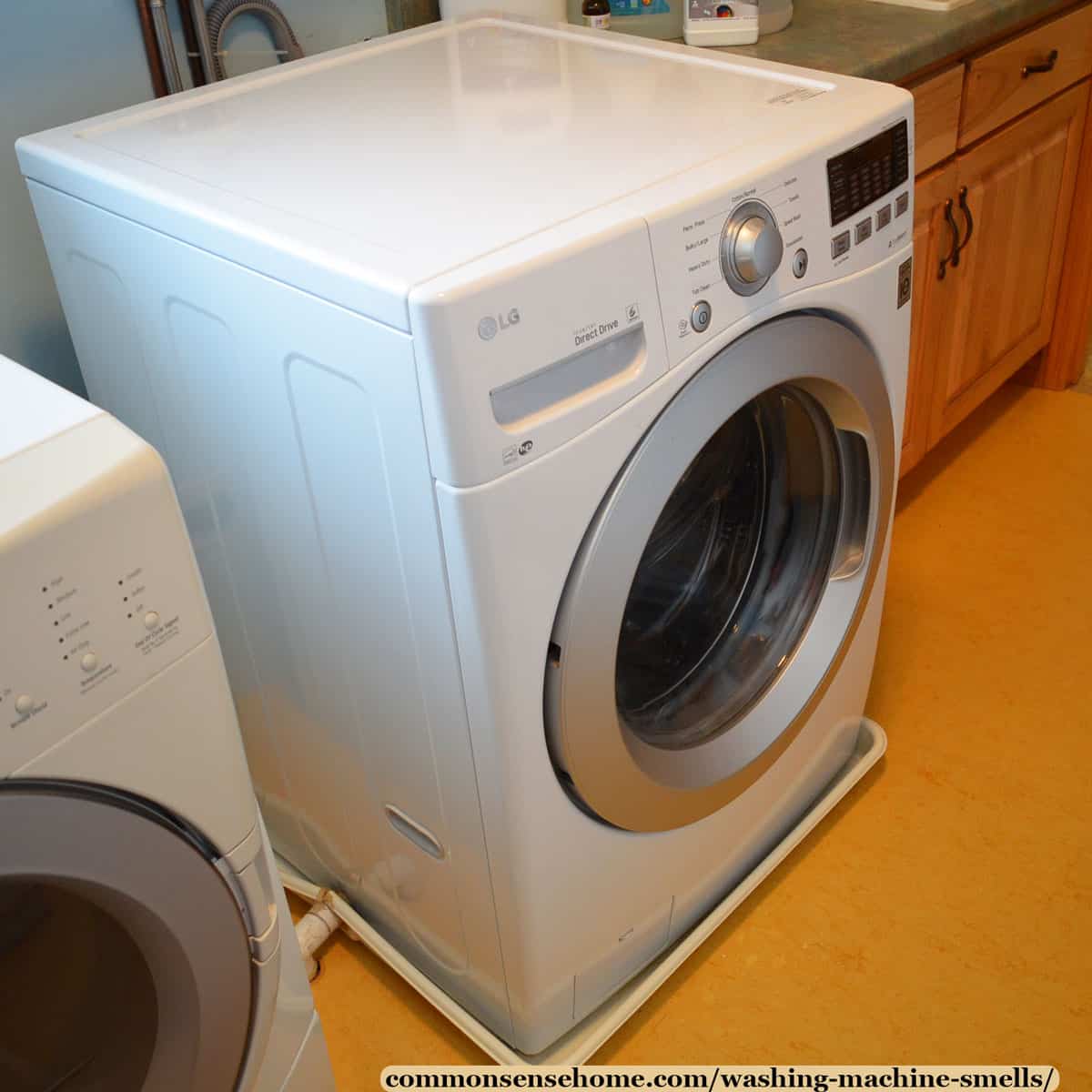
If your clean clothes don't smell clean, or you notice a bad odor in the laundry room, we can help. We'll walk you through several options to get rid of the smell in your washing machine, plus tips to prevent it from coming back.
What Causes Washing Machine Smells?
Washing machine smells such as a musty odor or rotten egg smell come from bacteria.
Bacteria LOVE moist conditions, and the thin layer of soap scum, fabric softener and laundry grime inside the washer are great bacteria chow. If you have a front load washer, stagnant water collects below the drum. Without a clean-out port, this area can get extremely stinky.
Another problem area is the rubber seal around the door. This gathers hair, lint and debris, and is prone to mold and mildew growth.
A third potential odor “hot spot” is the soap dispenser area. If it sits wet, bacteria scum can grow.
How to Get Rid of Washing Machine Smells
There are a number of different options you can use to get the odor out of your clothes washer.
I recommend a three step approach for front loaders, working from top to bottom:
- Clean the dispenser area
- Wipe down and remove debris from the door gaskets
- Sanitize the laundry tub
If you have a front loader with a clean out drain, that gets cleared, too.
If using a top loader, amounts of cleaning agent used may vary, but the concept is the same. Clean any dispensers and crannies, then sanitize the tub.
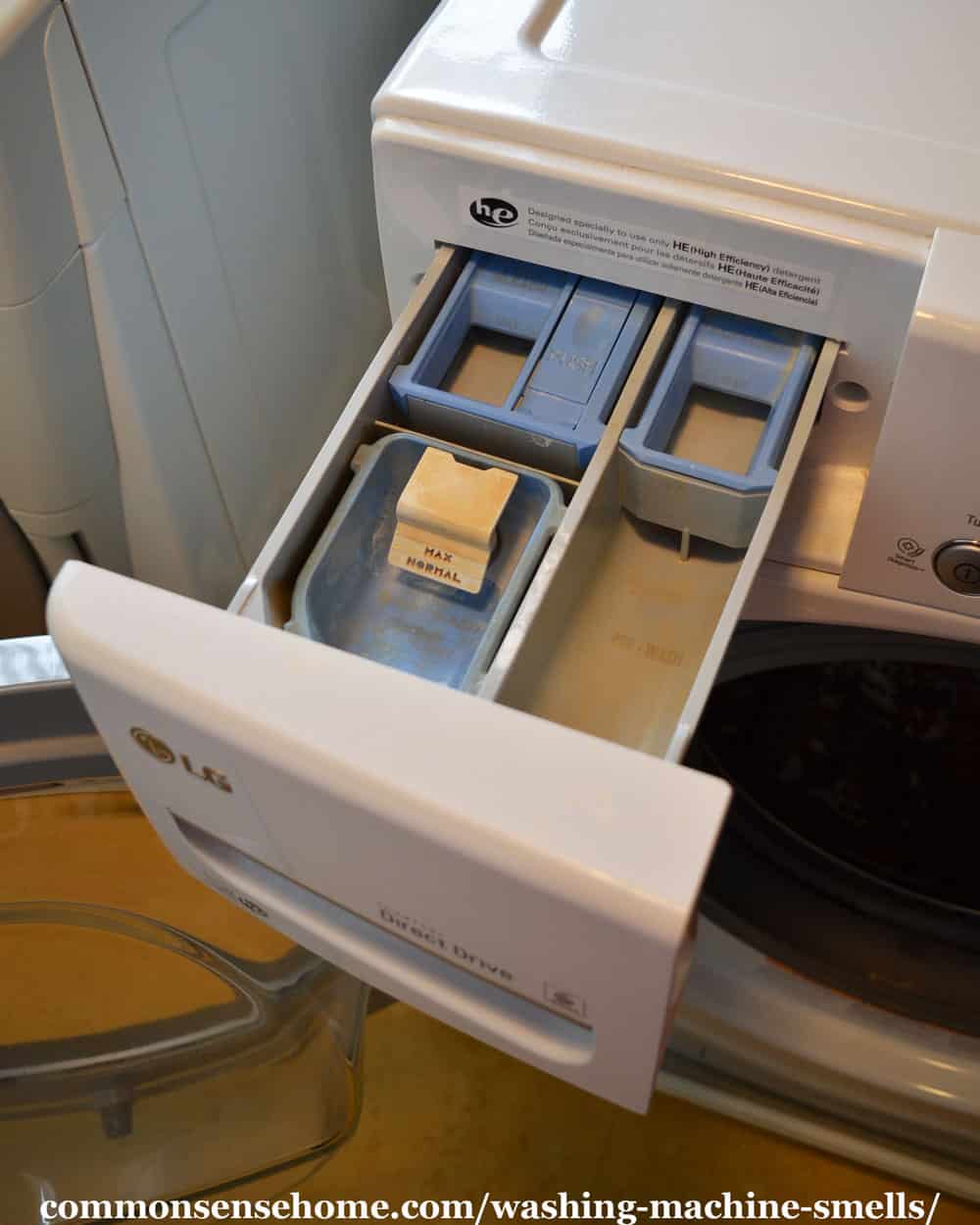
Cleaning the Dispenser
If the laundry detergent dispenser of your washer is removable, go ahead and take it out to clean it. I washed our old one in the laundry room sink.
For those with a dispenser that stays in place, remove any loose parts and clean them. (Make sure to put them back when you are done.) Use a cotton swap, pipe cleaner or cleaning rag to get in corners and remove buildup as best as you are able.
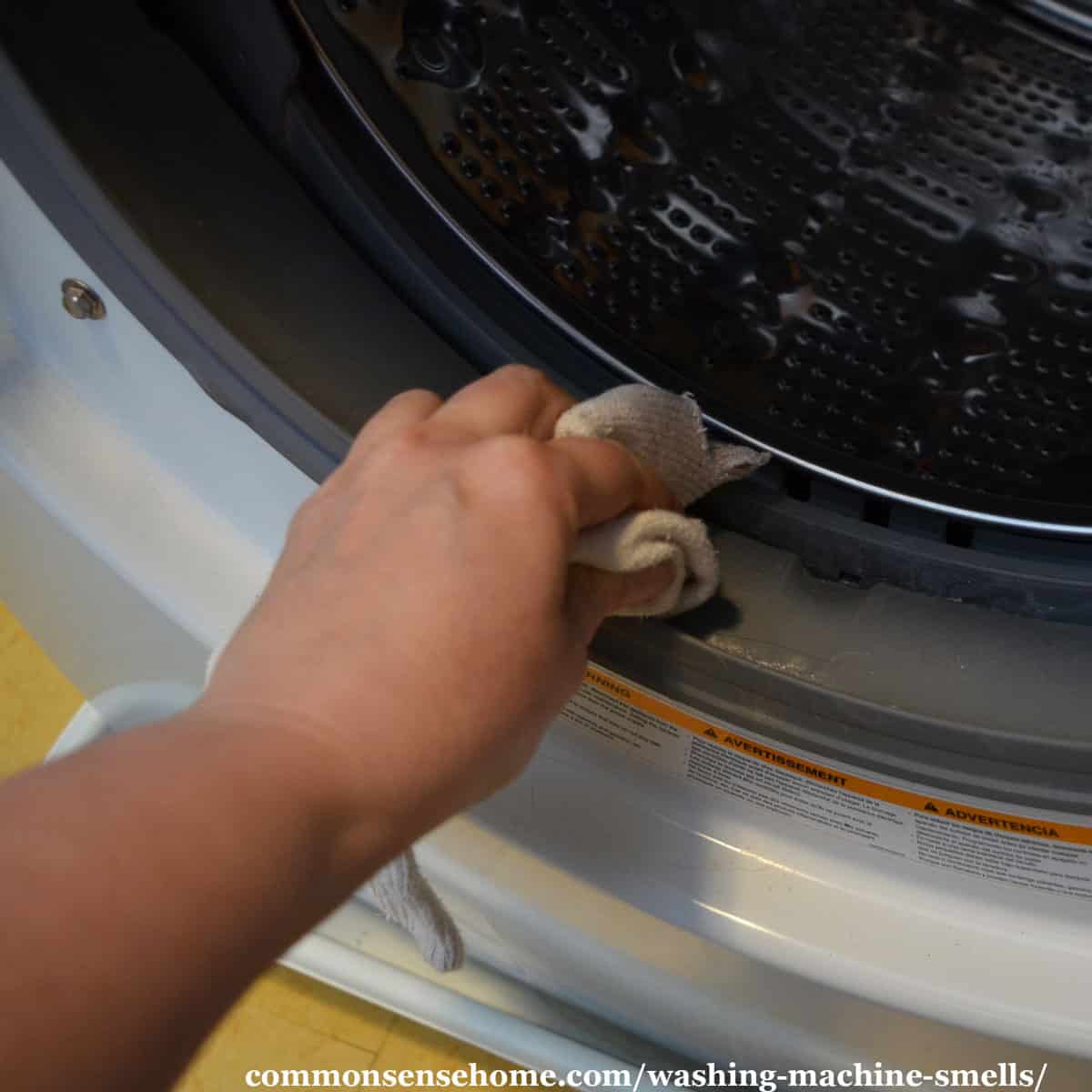
Wiping Down the Rubber Gasket
Water , cleaning products and clothing debris build up in the rubber seal around the door. The worst buildup is on the bottom half, especially in the drain holes.
We use an old sock to wipe down the gasket and door, because it is soft and absorbent. If you have a lot of soap scum or mildew buildup, use a mix of about a quart of warm water and a cup of distilled white vinegar for cleaning.
Make sure to clean hair, lint and other debris out of the drain holes. You can use a cotton swap, pipe cleaner or tweezers to clear the holes, but the best tool I've found is a small round brush. (They're also great for cleaning items like reusable straws.)
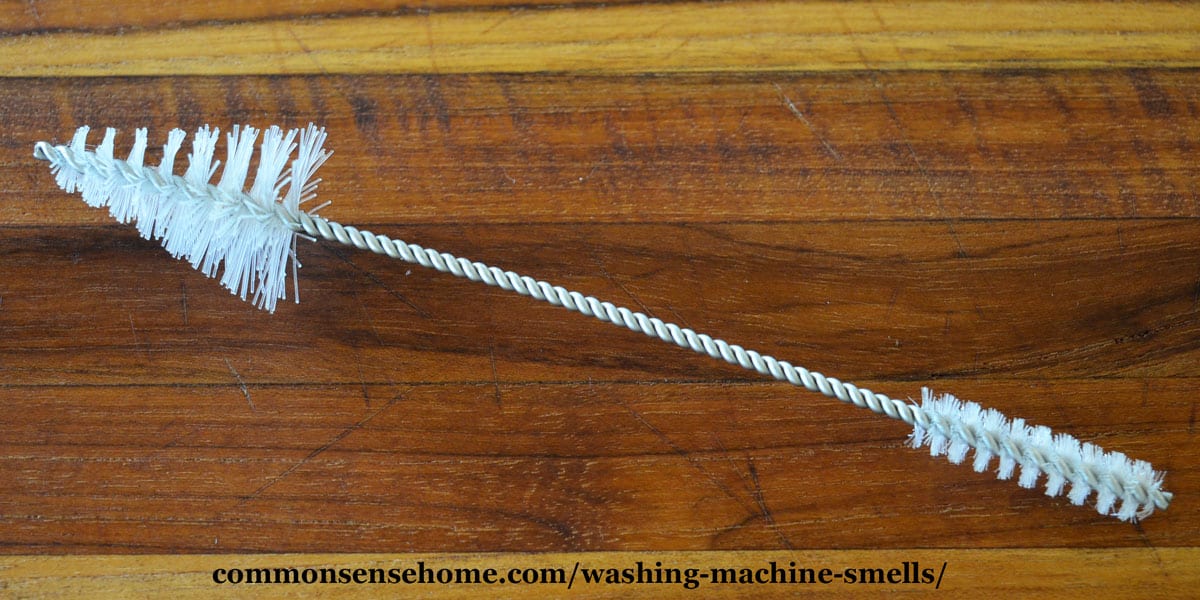
I keep brushes in the laundry room and in the kitchen.
The bottom area of the rubber gasket where the drain holes are is one of the worst spots for washing machine smells. I wipe mine down every few loads.
Deodorizing the Laundry Tub
Most newer clothes washers now have a Sanitize or Self Clean cycle. Simply follow the manufacturer's directions for the cleaning cycle.
If a cleaning cycle alone isn't enough, add:
- bleach – or –
- baking soda and vinegar – or –
- vinegar only – or –
- washing machine deodorizer
Bleach kills bacteria, but it's also tough on skin and bad to breath. Use 1/2 cup bleach for front loaders, 1 cup for top loaders. Run the washer on “hot” wash cycle with no laundry in the machine.
To use baking soda and vinegar, use 1/4 cup baking soda and 1/4 cup water in the dispenser. Add two cups of vinegar in the drum for front loaders, for cups for top loaders. Run a cycle with hot water and no laundry.
You can skip the baking soda if you like. Baking soda absorbs odors, and vinegar removes soap scum.
For deodorizers such as Enviroklenz Washing Machine Deodorizer, follow the directions on the package. The Enviroklenz product uses 1/2 cup cleaner and a warm water wash.
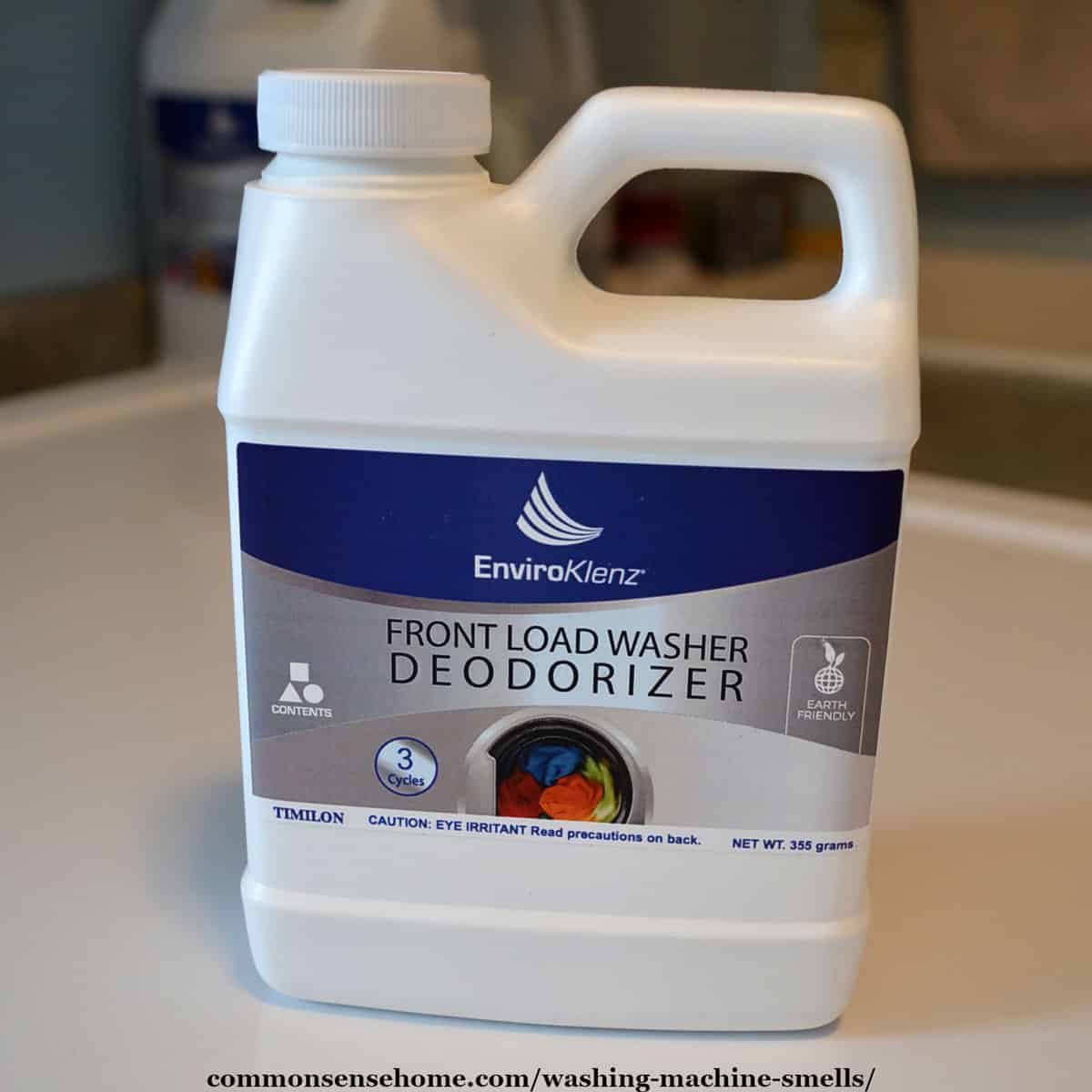
If Your Washer Has a Cleanout
Our washing machine has a drain cleanout, follow the manufacturer's directions for cleaning. I demonstrate cleaning our washer in the video below.
Avoiding Washing Machine Smells
As I mentioned earlier, the bacteria that cause washing machine smells love moisture. To fight them, we need to keep things dry, and remove their food.
Keep the drum and dispenser dry. I know it looks a little messy, but it's best to leave the door open and dispenser pulled out when the machine is not in use. A fan, open window or dehumidifier can also help with airflow.
Wipe down the gasket regularly. As I mentioned above, I wipe down the gasket every few loads. If you notice standing water, wipe more frequently.

Use the right detergent and laundry products. If you have a high efficiency washer, use a high efficiency detergent. Normal detergents (including homemade laundry detergent) can create a lot of suds and buildup. Liquid fabric softener also causes scum buildup.
I choose low sudsing cleaners like Ecos laundry detergent and a white vinegar rinse. For particularly stinky laundry, I use detergent and Enviroklenz laundry odor remover and skip the vinegar.
Washing clothes in cold water can increase soap scum deposits. If you are doing both warm and cold loads, leave your warm (or hot) load until last to help clear the soap scum.
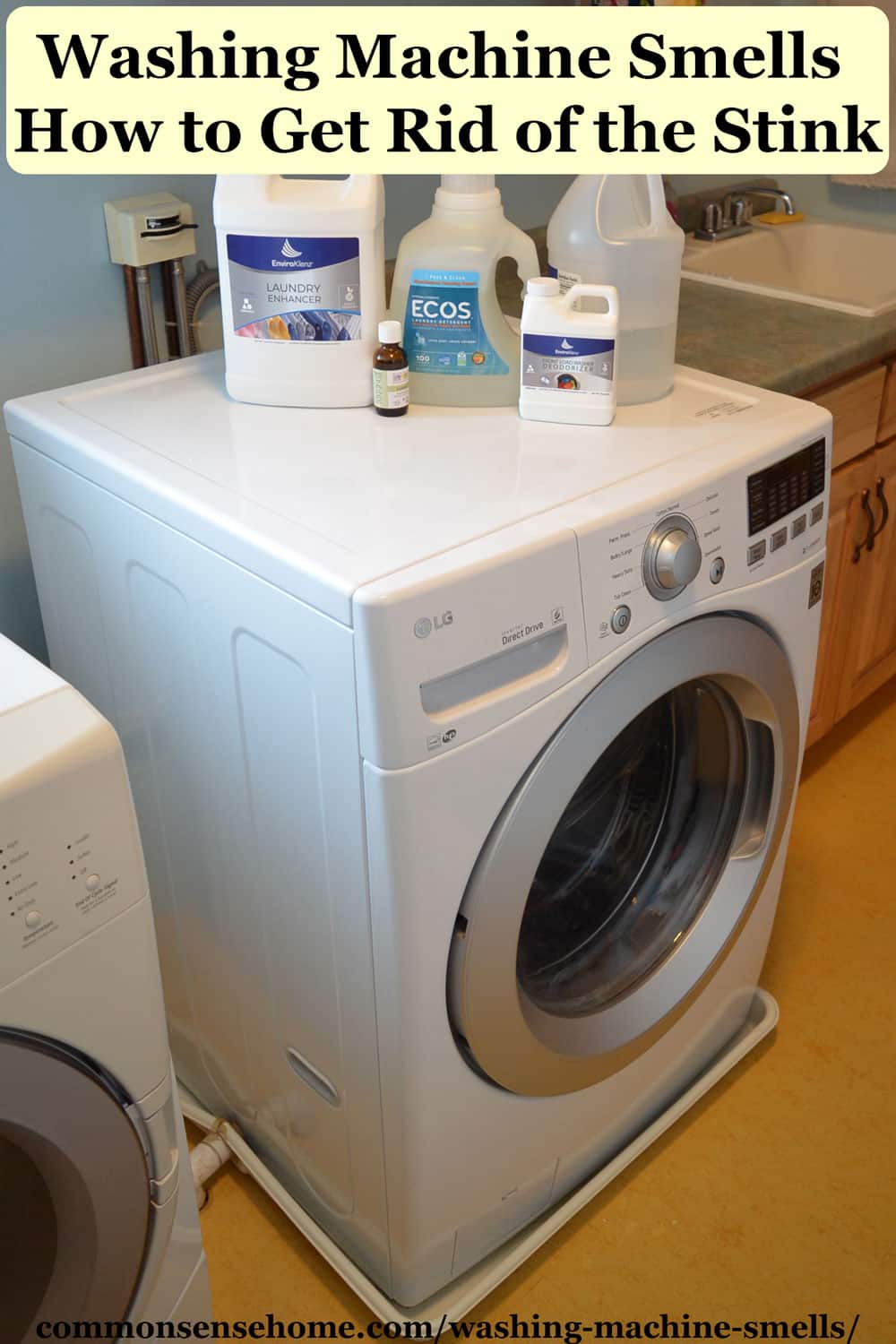
More Odor Fighting Tips
If you need more natural, non-toxic ways to fight odor in the laundry room and around the house, see:
- 6 Ways to Get the Musty Smell Out of Clothes and Towels
- Musty Smells in the House – Finding Them and Getting Rid of Them
- Best Odor Eliminators for the Refrigerator, Freezer and Carpets and More
For Those who Like to Line Dry Clothing
Check out Kevin's Quality Clothespins and the Prairie Pin Pouch clothespin bag.

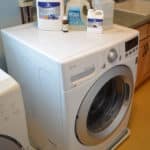
Thank you for all of this info, I was never taught how to care for laundry or machines properly (not so great upbringing), and have been so frustrated with the musty odors in my towels and the machine itself. I think I have that exact same machine, so I’m gonna go deep clean it like you showed!
Question- if I use the vinegar, does it go in the detergent slot? Surely it can’t hold that amount though…does it just go inside the machine itself instead?
Also, when using a vinegar rinse for clothes, does it leave a lingering vinegar smell?
Thank you for any help!
I dump the vinegar in the softener dispenser. There’s no lingering vinegar odor. (As much as I enjoy a good pickle, I have no urge to smell like one.)
The old top load machines were more open, so any water residue left in the machine4 evaporated, plus they used more water, which normally flushed residue out.
Now these high efficiency machines trap water in crannies, and try to use less water. We’ve “solved” one set of problems and created others.
Good info. I have the exact same washer. Where did you get that bottom catch all tray? I too have once (or twice) not tightened up the bottom thingy when cleaning. That tray would be most helpful.
Hi Kay.
That was installed by the plumbers when we first built the house. I haven’t seen any in home improvement stores, but I bet you could find one in a local plumbing supply place. You do want to make sure it has a drain if at all possible, because they fill up really fast. Also, in retrospect, a bottom drain would have been better than a side drain like ours has, because the side drain allows water so sit below the drain level. It was a bear to get it all cleaned out.
I have an old top loading machine. I always use a cup of white vinegar in the final rinse. I also never close the lid when I am not using it – it helps it to air out and let any small amount of water left to evaporate. I have never had a problem with smells either. Lots of good info to pass on to friends that do have a front loader. Thanks, Laurie.